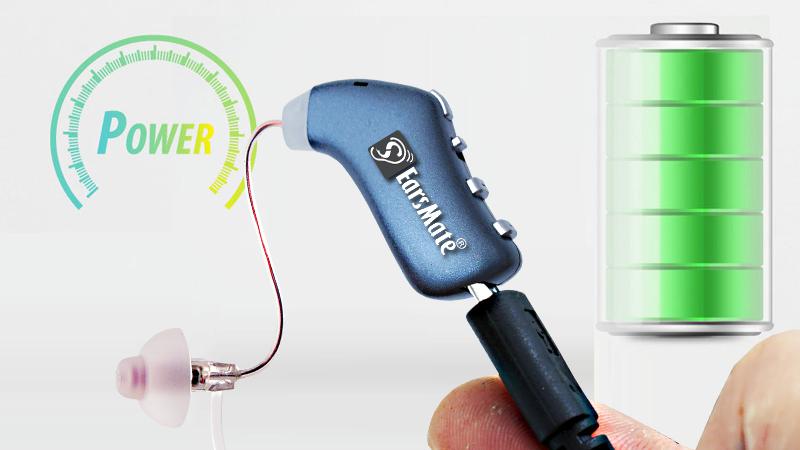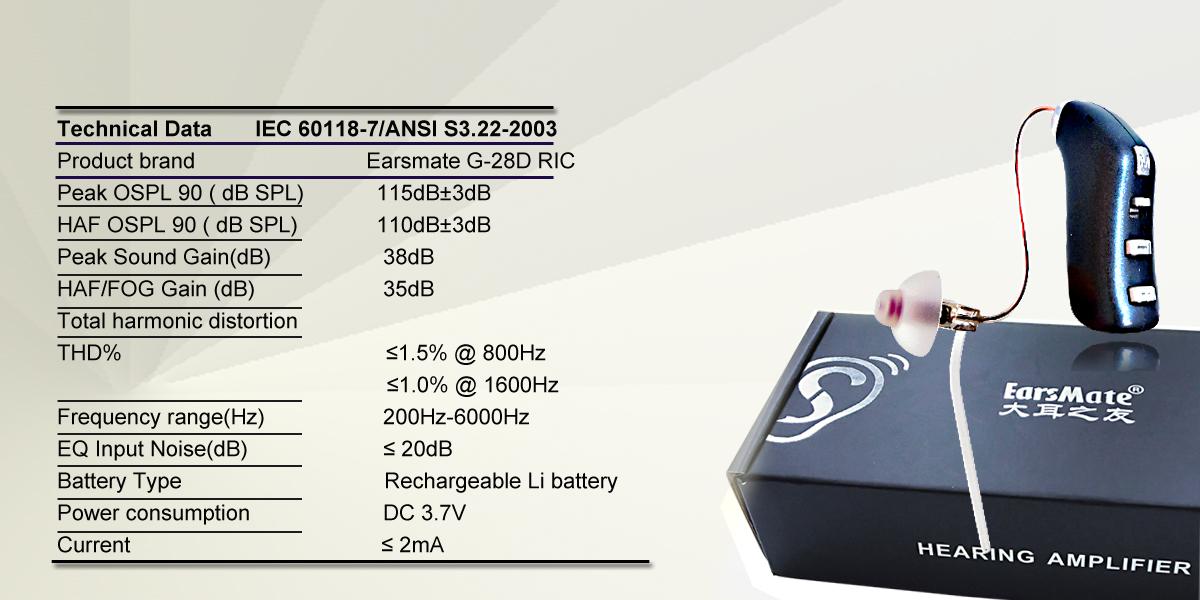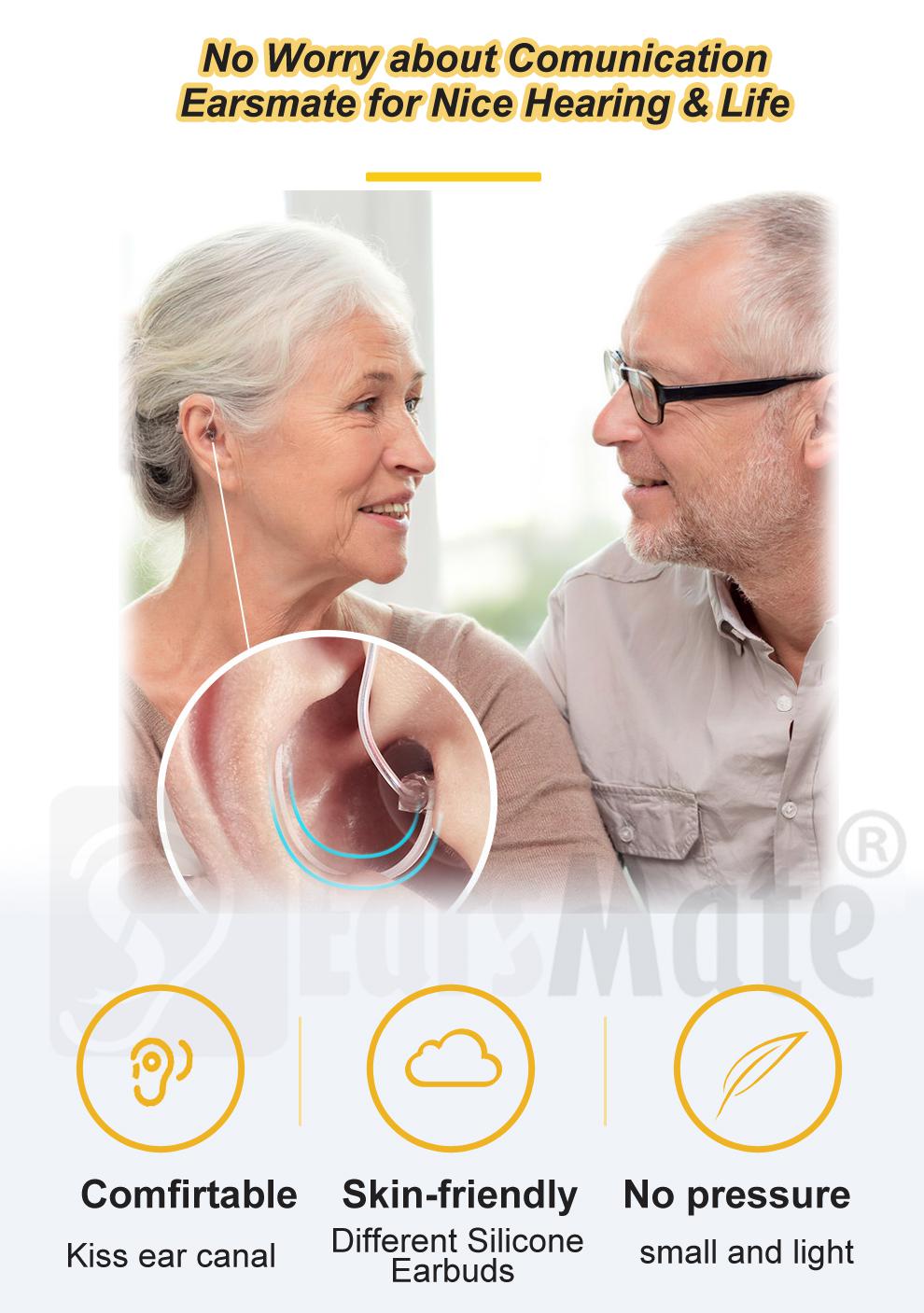Pourquoi les aides auditives rechargeables sont de plus en plus populaires en 2021
Nowadays,hearing aids are powered by either one of two types of batteries the one type is the disposable "button" batteries,like the Zinc Air batteries of A10,G13,A312 or A675;the other type is the rechargeable batteries,like the ZP power battery,the Lithium Battery or the Ni-MH battery.
For the most hearing aid devices, disposable batteries are still the more common option, however,more and more hearing aid manufacturers are making rechargeable hearing aids,including the brand of Unitron,Phonak,AXON,Siemens,Widex,Newsound, EarsMATE,Resound etc..
A rechargeable hearing aid like our Earsmate G17 and G28D RIC consists of hearing aids with rechargeable batteries, a USB Charger,or the charging station for the hearing aids. The rechargeable hearing aids have built-in batteries that do not require regular removal, compared to hearing aids with traditional disposable batteries.
Earsmate G28D RIC Digital Hearing Aid Features:
*Newest 100% Digital Circuitry
*Rechargeable-charging 4 hours, running 30-35 hours.
*Multi Channels Signal Processing-with several amplification channels, the received sound is divided into different 16 frequency bands for separate analysis, processing and recurring.
*Sound Noise Synchronization Detection Optimization
*Adaptive Noise Reduction to Reduce Background Noise
*Acoustic Feedback Cancellation
*Digital Volume Levels- with prompt tone, clearly know the volume level.
*One Finger Operation-easily change the volume and program, adjust to your listening environment.
*Automatic Memory-if the device is turned off, the program and volume selection always remains the same until changed by the user.

Here,let鈥檚 learn more advantages of rechargeable hearing aid with rechargeable batteries.
1.Long shelf life
Most of the new rechargeable hearing aids use lithium ion batteries, which can hold a charge for up to 100 hours and last approximately five years before they need to be replaced,for example,the Earsmate hearing aids G-25, and the Digital RIC hearing aid of G-28D RIC,the battery last working for upto 40 hours.And for the mini in ear hearing aid of G-17 and G-12,the rechargeable battery life will be 35 hours to 40 hours.

Meanwhile, hearing aids with disposable batteries require new batteries every few days to weeks, depending on the hearing aid model.
2.Safer for kids
Disposable button batteries are extremely dangerous if accidentally swallowed by pets or kids, yet it happens fairly often. Rechargeable hearing aids don't pose this risk, unless the entire hearing aid is swallowed,which is impossible to happen wit Kids .
3.Easier to handle
People who have dexterity issues or those who don鈥檛 want to worry about constantly buying and changing batteries might benefit from wearing rechargeable hearing aids products. That's because disposable batteries tend to be tiny, and the packaging can be difficult to manipulate.
It is the fact that If peeling the tab off a battery and not dropping it, or being able to get it to fit into the compartment, is difficult for somebody, then rechargeable would be a huge advantage.

A 90-year-old patient found them to be invaluable. 鈥淨uite frankly, you could drive down the street and hear his television or pound on the door and he would not hear you,鈥� he said. 鈥淗e had limited dexterity and sight 鈥� and wouldn鈥檛 wear hearing aids because she couldn鈥檛 change the battery.鈥�
He fit him with rechargeable hearing aids and kept an extra charger in his office so he wouldn鈥檛 have to live without hearing aids if a problem occurred.
鈥淚t totally changed his life and gave his family peace of mind.鈥�
